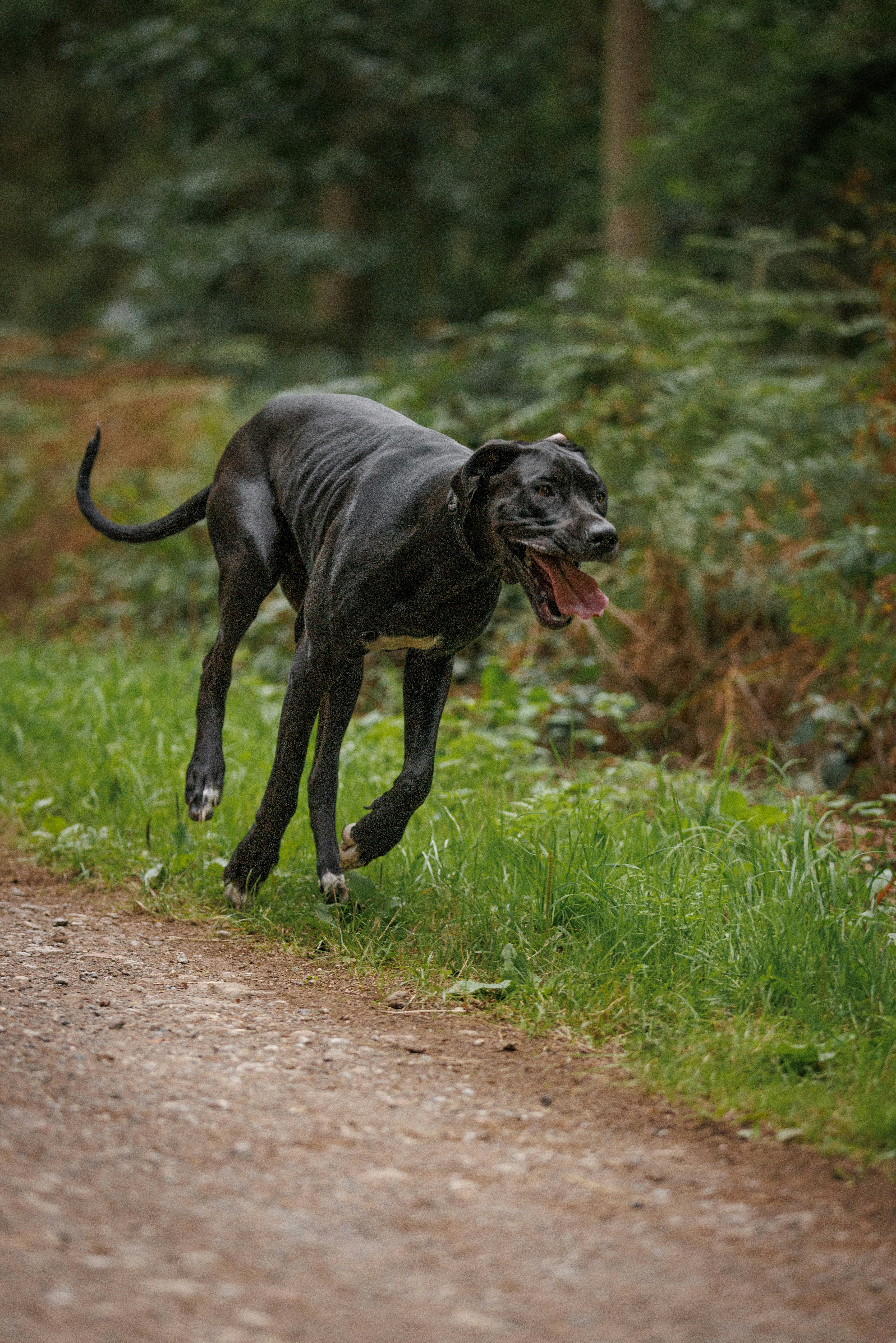Are three W’s the key to 2025? Is simple alliteration the path to your pet’s best health? Perhaps.
As we look to 2025 and make changes to our lives, I recommend we also consider our cherished companions. In fact, it may be easier to prioritize our pets’ health and wellbeing than our own. Perhaps to make a resolution “stick” for us or our pets, try making it a partnership or commitment that involves you and your pet.
Start with the Three w’s for 2025.
What are these three W’s you may ask? Why they are Wellness, Weight, and Walking. When should we start with this commitment- Now my friends, now.
Wellness (First W)–
Wellness care/Preventative care is a vital component to preventing common and potentially life altering health conditions and diseases. Annual examinations (or biannually for senior pets or pets with known underlying conditions), blood work, vaccines, screening tests, and parasite prevention can detect and prevent many of these life altering conditions.
Dental disease is perhaps one of the most common conditions we specifically look for with a wellness exam. Dental disease can lead to acute and chronic pain, tooth decay and loss, and systemic infections that can affect your pet’s kidneys, liver, or heart. Yearly dental exams during your pet’s wellness visits can help identify early changes in your pet’s oral health. Routine cleanings under anesthesia allow us to effectively remove accumulating plaque and tartar before significant damage is done. Regular at-home dental care (e.g., brushing your pet’s teeth, feeding a dental diet) and professional dental cleanings and X-rays ensure your pet’s teeth and gums stay healthy and reduce the risk of severe and progressive disease.
Viral and other infectious disease prevention. Infectious diseases, such as rabies, parvovirus, distemper virus, leptospirosis in dogs, and panleukopenia and leukemia in cats, can be life-threatening. However, they are largely preventable with vaccines. Routine vaccination, including boosters, are essential for protecting your pet from many serious diseases. We can provide a vaccination schedule tailored to your pet’s age, lifestyle, and health status and review this protocol at each life stage. Keeping up with vaccinations ensures your pet is protected from common and dangerous diseases.
Parasitic disease prevention includes testing and preventative medications to address intestinal parasites (round worms, hookworms, tapeworms, whipworms, and protozoal parasites like giardia and coccidia) and external parasites like fleas, and ticks (carriers of many rickettsial diseases like Ehrlichia, Rocky Mountain Spotted Fever and Lyme disease). Heartworm disease (a mosquito vectored blood parasite which can grow to 14” in length in the blood vessels of the heart and lungs can be detected with blood screening tests and usually easily prevented with regular preventative medication.
Chronic kidney disease. Chronic kidney disease (CKD) is a progressive condition that affects the kidneys’ ability to filter waste products from the blood. Without regular wellness care that includes physical exams, blood work, and urinalysis, CKD can go undetected for years. Unfortunately, 75% of kidney function is lost by the time affected pets show visible illness signs. Routine veterinary care can detect CKD in its earliest stages, allowing for timely intervention and disease management. Although CKD can’t be cured, effective treatment with medication and diet can slow its progression, allowing pets with CKD to enjoy a greater quality of life for longer.
Routine wellness care is anything but routine. A typical wellness examination includes evaluation of eyes, ears, oral health, lymph nodes, heart, lungs, abdominal palpation, joints, body condition scoring, skin, and discussion regarding balanced diet, food amounts, and behavior issues. It’s a powerful and effective method for preventing many common diseases and ensuring your pet’s overall health and well-being. Invest in your pet’s wellness by committing to routine exams, vaccines, dental care, and preventive treatments.
Make a commitment to yourself to also schedule your own Wellness Exam.
Check that box for you and your pet in 2025.
Weight (Second W)
This is not as easy as it sounds (it never is). Not a day goes by when we are not asked about a pet’s weight. “Is Lily overweight, Doc?”. Don’t be afraid to ask. We are here to help you and work together with nutritional advice and formulate a plan that includes food amounts and training treat types and amounts, offer personalized nutrition, exercise, and weight loss recommendations.
Obesity in pets isn’t a matter of appearance—obesity is a disease that affects both their quality and length of life. Excess fat tissue releases inflammatory substances that cause inflammation throughout the body and can contribute to serious health problems, such as diabetes, pancreatitis, arthritis, cancer, kidney failure, and heart disease.
We fully understand this can be a touchy subject with frequent differences of opinion in the same household. We do get some joy when we see are pets eat what give them. But our pets can quickly “train us” to give them just what they want, rather than what they need. Certainly, obesity can have biological based causes, such as thyroid or other hormonal causes. But most often it occurs due to some simple missteps in the feeding process:
- Many pet food manufacturers recommend far too much food for pets.
- Feeding a food for the wrong life stage is another common mistake.
- Rounding up food amounts to fit a scoop or cup, rather than being exact can really add up the calories.
- Adding homemade “toppers” that are not calorically appropriate. (adding too much cooked chicken to a bowl is common).
- Feeding table scraps. Please don’t go there. Behavioral issues, obesity, digestive upset (vomiting, diarrhea, pancreatitis). All the things will go wrong.
- Feeding multiple pets from the same bowl or leaving multiple bowls down for multiple pets. They will not police themselves.
- Giving high calorie chews, like rawhides, and similar animal-based products that have a surprising number of calories.
- Awarding too many, too large, and too frequent of training treats. Remember to keep treats the size of your little fingernail. Dogs do not have a concept of treat size. Find a smaller training treat, break treats into smaller pieces, or use something like frozen green beans as a treat. It is common for us to do a little math calculation and discover that pets are receiving more calories from their treats than their actual food.
Feel free to ask about your pet’s weight. No judgement, we are just here to help and be an advocate for them. You are all welcome to bring your pets and use one of our scales to check their weight.
Make a commitment to ask for help with your pet’s weight. We can do this together.
Walking (Third W)
The third W includes so much more than just walking and can look different for every pet and every pet’s caretaker. But for alliteration’s sake, I’m calling this section Walking. It really involves both physical exercise and mental stimulation. What is appropriate for a 12-year-old labrador with a senior citizen owner (I’m included in that age group) is not the same as a 2-year-old Border Collie with a 28-year-old outdoor enthusiast for an owner. Nor is it the same as a solitary 10-year-old overweight cat in an apartment versus a multi-cat household with two younger cats and a kitten to get the party started. The key here is to do something, make realistic goals for you and your pet, and get started. Be flexible and realize that what you envision your dog or cat loving may not be so great in their eyes. Try something new and search for shared joy in those moments. Try using an activity tracker App to monitor you and your pet’s progress and encourage accountability. Walking could be two blocks or five miles- it’s all good. For those of you over achievers that cross country ski, hike, trail run, and all the other things with your dogs- God bless you. You are my heroes.
Another option- you can also teach your pet new tricks, introduce them to new environments, or try a competitive sport, such as agility courses or flyball. Keeping your pet’s mind sharp will improve their mood and overall well-being and strengthen your bond in a fun way.
For the older, overweight, or orthopedically challenged dog a walk may be simply to the end of the block and back two or three times a day. For other dogs, it could be a daily shorter walk/s and then a longer two to three mile walk three times per week. Some owners tell me about a more leisurely walk and sniff and explore outdoor time that takes 30-45 minutes, but maybe only covers a ¼ mile. That’s awesome. The point is- just start.
Cats need both the physical exercise and the mental stimulation to help prevent anxiety and stress related physical disorders. Provide them with a vertical living space (cat condos, shelves, cat trees), play with them using a light source to chase, feather wand toys, cardboard paper towel roll toys (a small treat inside of a roll with the ends folded over), provide them with a window view, play chase with a small yarn ball. A particular veterinary nutritionist who I follow, recommends feeding the overweight solitary cat by making them hunt for their food indoors. She recommends buying 6-8 small sushi sized plates. Then taking their morning or evening meal and splitting it up onto those plates. Then hide them throughout the house and let them be responsible for finding their own food. Great for their brain and their waistline. It also eliminates much of the “fast eating gluttony-vomiting cycle” we see so much.
The increased physical and mental activity will go a long way to improve your pet’s health and provide a good reason for us pet owners to get out there and move.
Start 2025 with the three W’s for you and your pet. Schedule those Wellness appointments for yourself and your pet; Commit to addressing your overweight pet situation and feel free to ask us for help; Get yourself and your pet moving- Walk.

